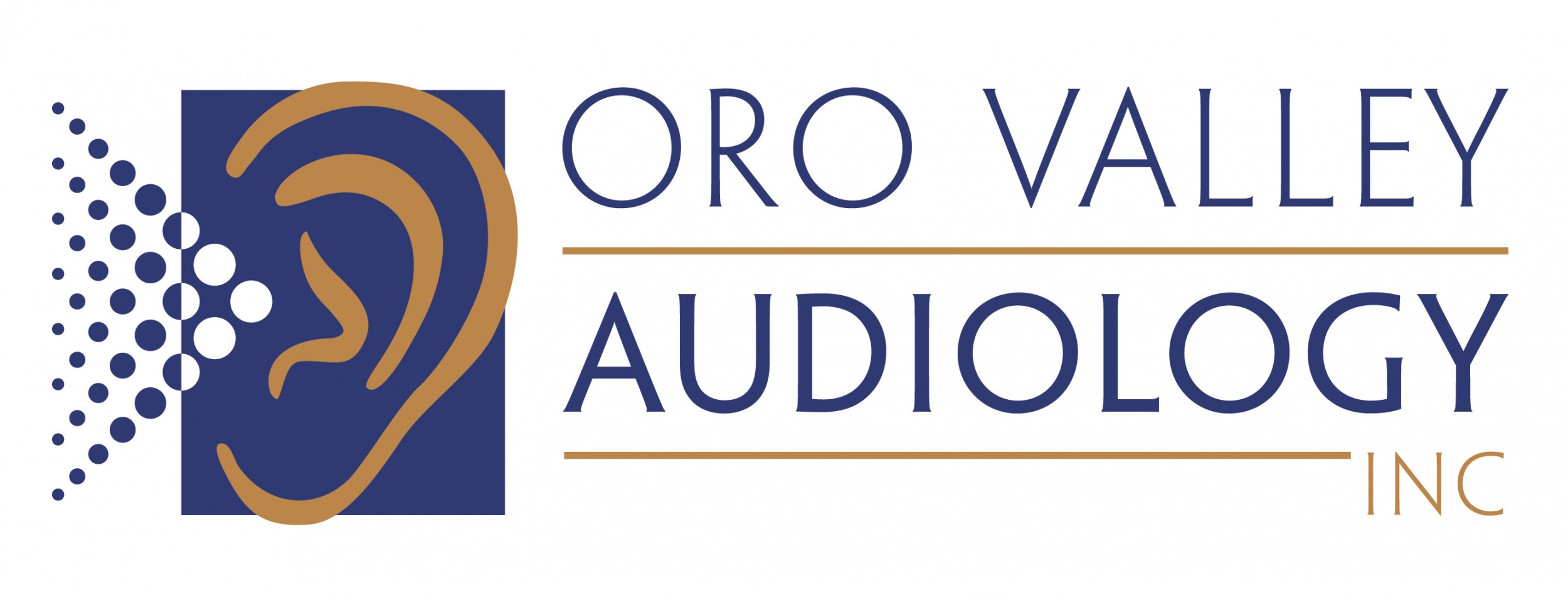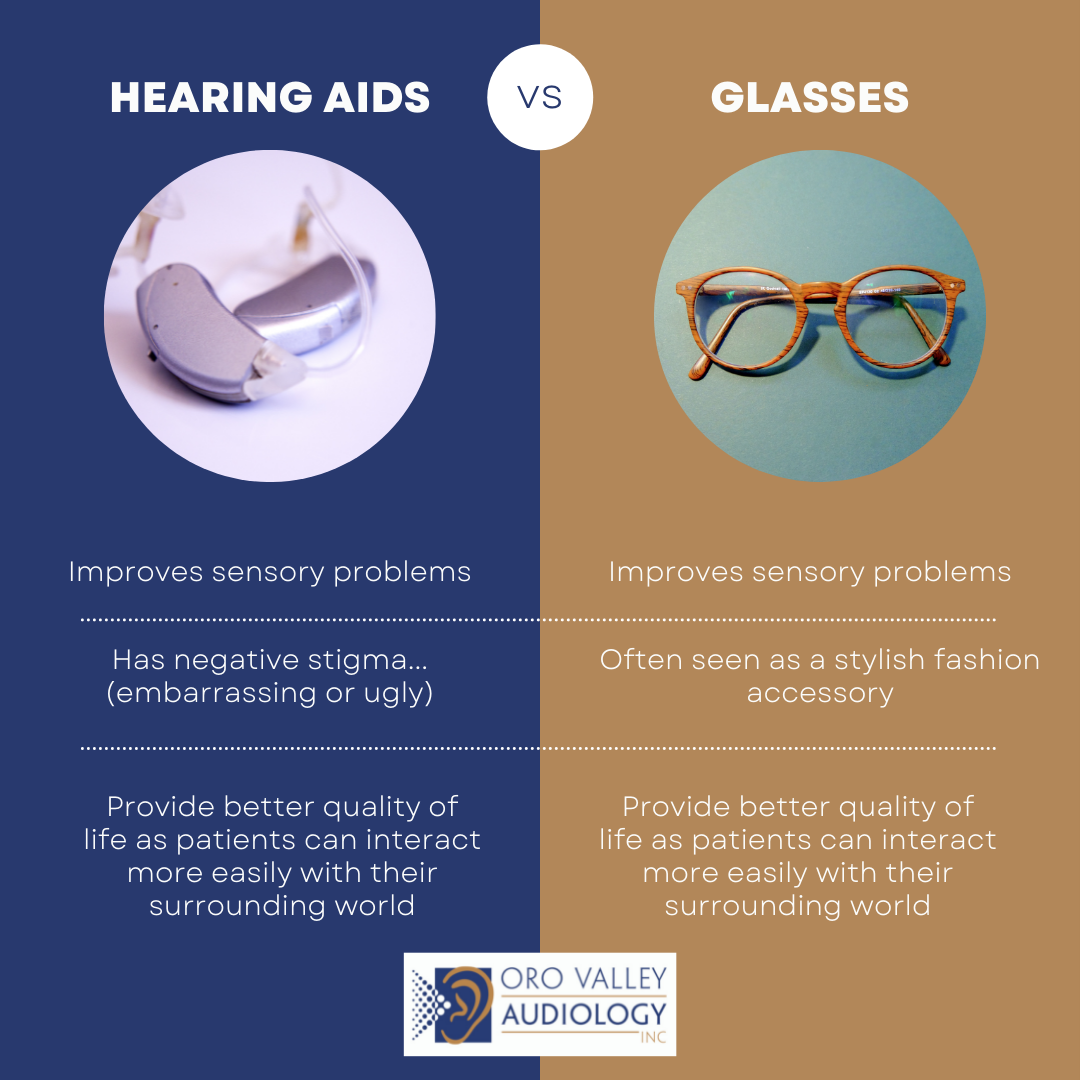We often find ourselves counseling patients regarding the difference between vision loss and hearing loss. Most patients feel as though amplification is an easy fix, just as their prescription eyewear.
Types of Hearing Loss
Although both glasses and hearing aids are used to improve sensory problems, they differ in several ways. With most vision loss, corrective lenses can fully reset eyesight to 20/20 by bending light waves as they enter the eye. However, hearing aids cannot always restore all lost hearing. Whether or not hearing aids can fully restore all auditory processing depends on the type of hearing loss.
For instance, conductive hearing loss that is caused when something disrupts the transmission of sound from the outer or middle ear to the inner ear can sometimes be fully corrected through medical intervention. Examples of conductive hearing loss causes are fluid in the middle ear or perforation of the eardrum. These issues affect only the middle ear, causing no damage to the inner ear or auditory nerve, meaning that amplification may correct this issue by passing sound more easily through the middle ear.
However, sensorineural hearing loss cannot as easily be corrected and this is the most common type of hearing loss we diagnose. This type of hearing loss is caused by nerve damage from noise exposure and/or other comorbidities, and it accounts for 90% of the hearing losses in the United States, according to Healthy Hearing. These damaged cells are non-regenerative and cannot be repaired medically. Hearing aids can amplify the sound to be more audible, but they cannot fully restore all clarity.
Hearing Aid Stigmas
Another difference between hearing aids and glasses is how they are perceived. While many people see glasses as stylish, they often consider hearing aids embarrassing and ugly. However, bulky large hearing aids are a thing of the past. Newer devices are smaller and virtually unnoticeable. They are even fitted with amazing technology that makes navigating the digital environment easier and more productive. Most hearing aids come equipped with Bluetooth technology, and higher-end models track your physical health, stream music, and stream phone calls for you. Hearing aids may not be as stylish as glasses (yet!), but they can do a lot more for you!
Many patients, when they first hear about these Bluetooth features, think that those features would not be that beneficial. We always have patients test the technology out in the office, and, almost without fail, patients are thoroughly impressed with the sound quality of phone calls and media through their hearing aids. Once they hear the sound through their hearing aids, most never want to go back. One patient was thrilled to be able to have clear conversations with family over the phone again. Another was excited to be able to function better in work with all of the phone conferences she had almost daily. Both felt more productive and connected than ever before because of this Bluetooth technology.
The Hearing Loss Journey
Some patients may experience some distortion or a short period of adjustment when wearing glasses for the first time, but those symptoms typically right themselves by the end of the day. Proper treatment for hearing loss, however, is a longer and more in-depth process if done by following best practices.
When fitted with hearing aids, our patients are reintroduced to sounds that they have slowly lost over time. Did you know your brain needs time to readjust to sounds that you haven’t heard in several years? The ticking of an old grandfather clock or the tapping of hard-soled shoes may surprise patients. Your brain is slowly readjusting, and this process can be beautiful and enjoyable. Patients often feel like they have “super-sonic” hearing and think that the sound must be turned up too much. They are shocked to learn that people with normal hearing hear those sounds and that they, too, at one time heard those sounds and were able to tune them out. Over time, however, most patients learn to tune those sounds out as well and become re-accustomed to the world of sounds they used to hear.
Correct Expectations
Although corrective lenses and hearing aids are different, they are equally important. If you would not try to read your favorite novel without wearing your prescription eyewear, why would you attempt to listen and carry on a conversation without your hearing aids? Amplification frees you from constantly misunderstanding people, no matter the type of hearing loss.
As you go in for a hearing aid consultation, remember to have realistic expectations. Don’t worry though, We make sure to counsel all our patients about realistic expectations. Hearing aids might not restore all missing sounds, but they will make a difference in your life if you are living with untreated hearing loss! Hearing loss causes insecurity and fear of embarrassment, making social interactions difficult for my patients. It can even lead to cognitive decline. If you are experiencing hearing loss, reach out to Oro Valley Audiology. We are more than happy to schedule an appointment with you and begin you on your miraculous journey toward better hearing!
https://www.aarp.org/disrupt-aging/stories/solutions/info-2018/hearing-loss-impacts-boomers-millennials.html
https://www.healthyhearing.com/report/50276-Common-causes-of-sensorineural-hearing-loss


